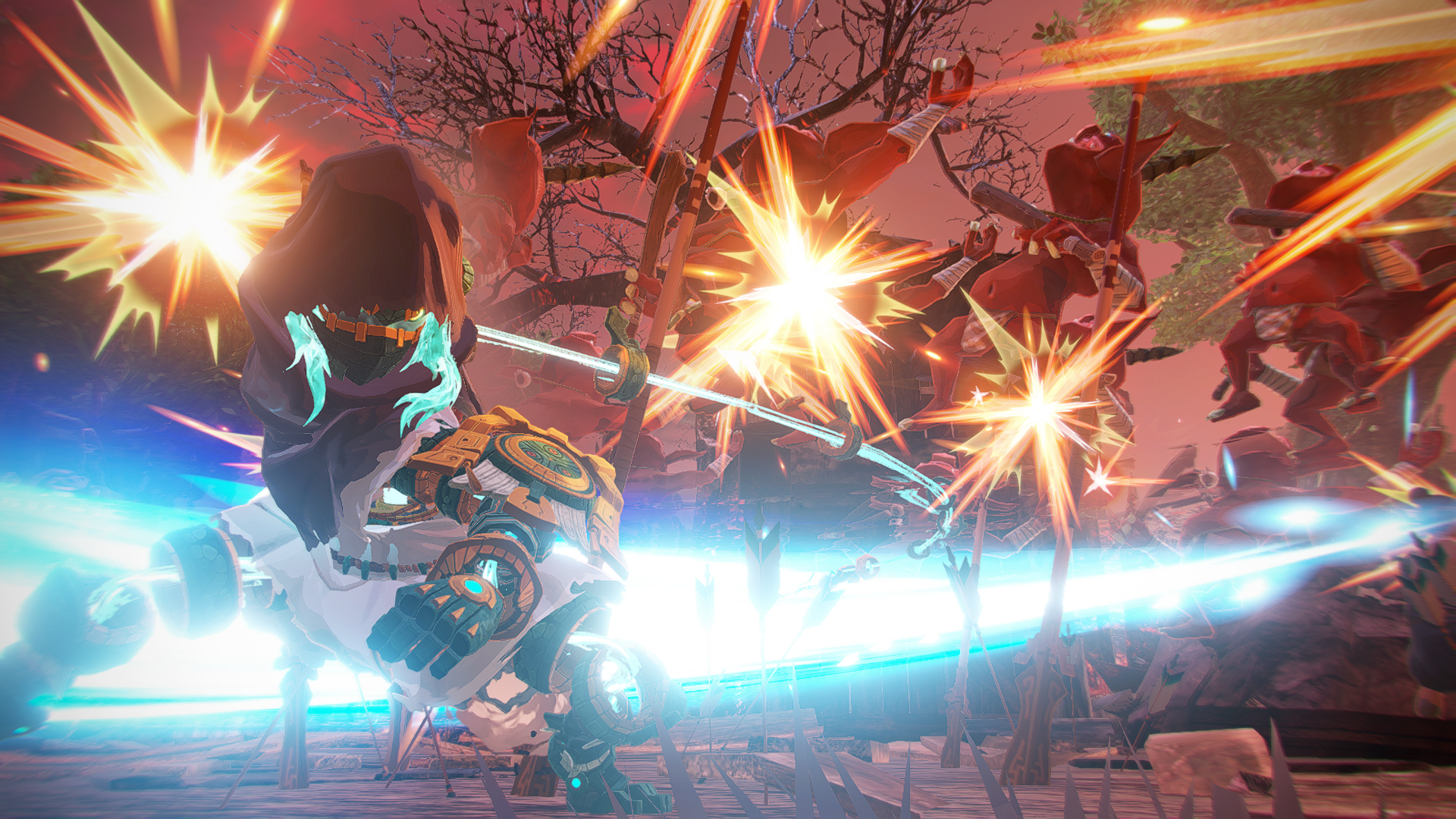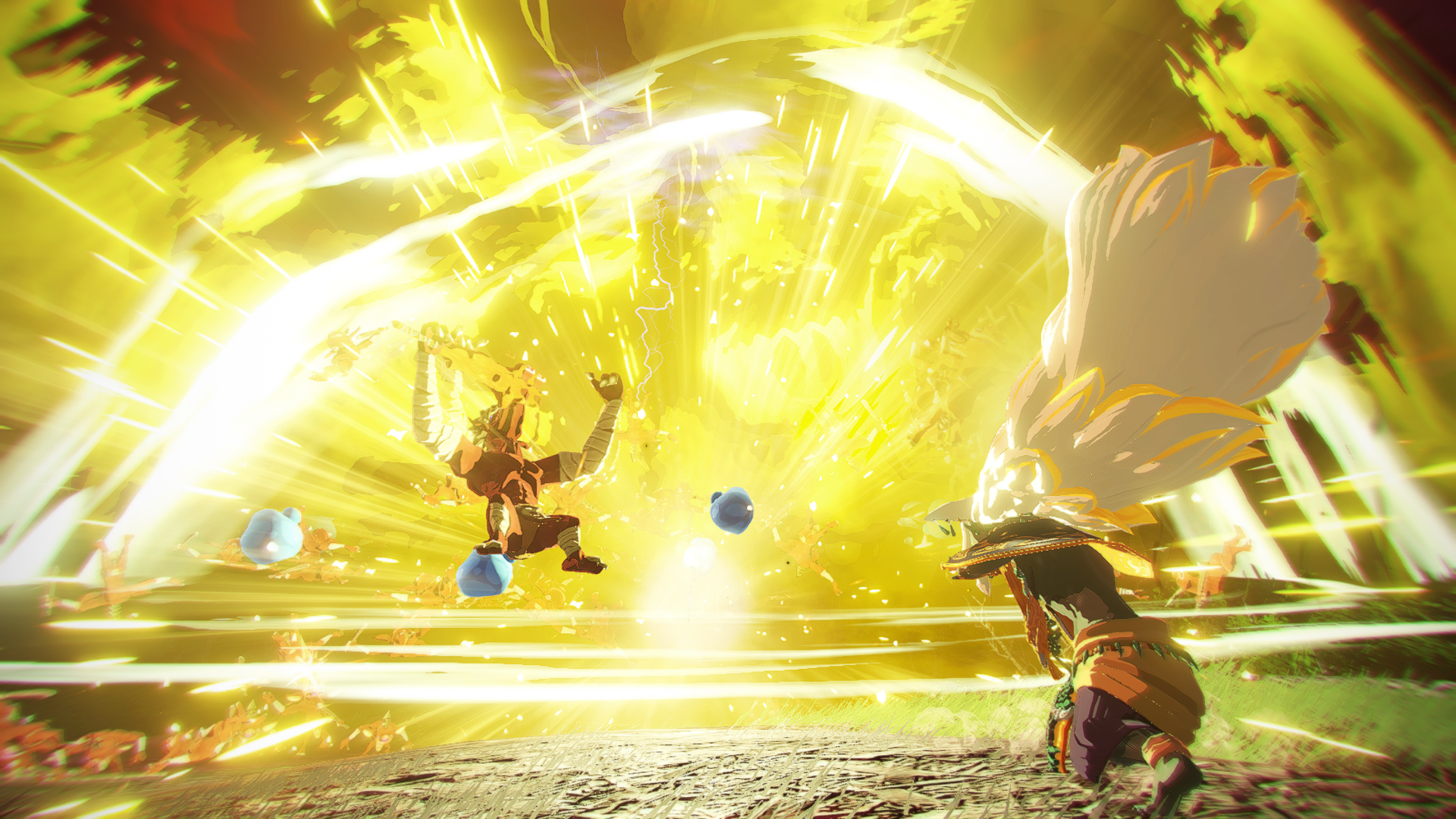Zelda’s ‘Wild Era’ is drawing to a close. After Breath of the Wild and Tears of the Kingdom reshaped the series, it’s almost poetic that our final return to this version of Hyrule happens through a spin-off. Hyrule Warriors: Age of Imprisonment isn’t subtle about its mission but it dives straight into the ancient war that Tears of the Kingdom only whispered about. This is the moment when myth became memory; when the legends of Rauru, Sonia, and the first Hyrule were written in fire.
From its opening scene, it’s clear that Koei Tecmo finally found the balance it had been chasing. The chaos of the Musou genre, the one-versus-a-thousand combat, feels more cinematic, more purposeful. You’re not just mowing through mobs; you’re taking part in the founding myth of the Zelda universe. It’s still absurdly over-the-top, but now it carries a pulse of narrative weight. The Switch 2 hardware helps more than you’d think. The performance is flawless: no dips, no lag, no distraction. Everything flows, and that flow sells the fantasy. When light explodes across the battlefield and Zelda’s spell collides with a thousand red eyes in the dark, it almost feels sacred.
The past feels present
This story doesn’t need Link. That’s maybe the boldest thing about it. Age of Imprisonment builds its tension around the characters we barely got to know in Tears of the Kingdom: Zelda as a reluctant leader, Rauru as a beacon of calm power, and Mineru as her conscience forged in metal and light. The cast grows fast, Gerudo chiefs, Zora monarchs, and ancient sages, each with distinct fighting styles that feel more experimental than anything in Age of Calamity. The developers didn’t just recycle move sets; they sculpted personalities out of attacks. Zelda wields light like a blade; Rauru crushes with slow, deliberate spear sweeps; Mineru moves like a living contraption of gears and faith.
What ties them together are the new Sync Strikes, tag-team finishers that merge two characters’ powers in spectacular bursts. It’s a system that feels surprisingly strategic, letting you shape duos that complement each other’s elements and speed. Zelda and Rauru’s combined beam of light still gives me goosebumps, not because it’s flashy, but because it feels earned. Every strike carries emotional history. You’re not just building combos; you’re building trust.
And that’s where Age of Imprisonment quietly eclipses its predecessors. The cutscenes have weight. The voice work lands. The pacing, for once, respects the drama. You can tell Koei Tecmo studied Tears of the Kingdom’s tone and decided to match it instead of parodying it. There’s room to breathe between battles now, short stretches where you walk through ruins, talk to allies, or simply stare at the horizon of a Hyrule that doesn’t exist yet. Those moments sell the scale more than any boss ever could.
Mechanics with a Zelda soul
The beauty of this game is how naturally the Zonai devices fit into the Warriors formula. You unlock them steadily, flamethrowers, water emitters, shock traps, and they’re not gimmicks. They change how you fight. Elemental weaknesses actually matter now, forcing you to switch tactics mid-battle instead of spamming your strongest move. When a Frost Gleeok descends on the field and you’ve only got a flame device with half a charge left, the tension feels real.
Even better, the Switch 2’s horsepower lets these devices light up the screen without choking the frame rate. Sparks scatter, particles shimmer, and not once does the game stumble. The new Sync Strikes tie into this beautifully, chaining special moves with elemental bursts in a way that almost feels choreographed. It’s the most technical Hyrule Warriors yet, but also the most readable. For the first time, a Warriors game feels technically impressive instead of “good for the hardware.”
There’s also a new Construct companion, a silent mechanical echo of Link’s combat style. He fights like a memory, all precision and restraint, paired with Calamo, a talkative little Korok that provides the game’s rare humor. Their side missions act as breathers between Zelda’s heavier story beats, a reminder that even in the oldest war, Hyrule still had heart.
A war worth fighting
If there’s one thing Age of Imprisonment understands, it’s rhythm. Each mission is long but layered; waves of enemies, shifting objectives, cinematic transitions that make every victory feel like a true achievement. It still embraces the Musou formula, but it feels less like busywork and more like purpose. The bosses are sharp, the enemy variety strong, and the sense of progression addictive. You unlock new heroes, upgrade weapons, refine devices, and before you know it, a quick run turns into a lost evening.
That’s the trick: it’s not a reinvention, it’s refinement. Age of Imprisonment isn’t going to convert Musou haters, but for everyone who ever found joy in its rhythm, this is the best version yet. The combat sings, the story connects, and the performance finally matches the ambition.
It’s also quietly emotional. Watching Zelda rise from scholar to symbol, surrounded by allies who fight not for prophecy but for survival, gives the game a sense of closure that Tears of the Kingdom never quite reached. It’s the missing piece, the last echo of an era that defined modern Zelda.
Conclusion:
Hyrule Warriors: Age of Imprisonment is both a farewell and a celebration. It doesn’t rewrite what the genre is; it just perfects how it fits into Zelda’s mythology. The pacing is smoother, the combat smarter, and the story stronger than ever. It’s not for everyone, you’ll still spend most of your time tearing through armies, but it’s done with such flair, such affection for the world it expands, that it’s hard not to get swept up in it.
For long-time Zelda fans, this feels like closure. For Musou fans, it’s a technical victory. And for everyone in between, it’s just a great time to lose yourself in chaos one last time.




